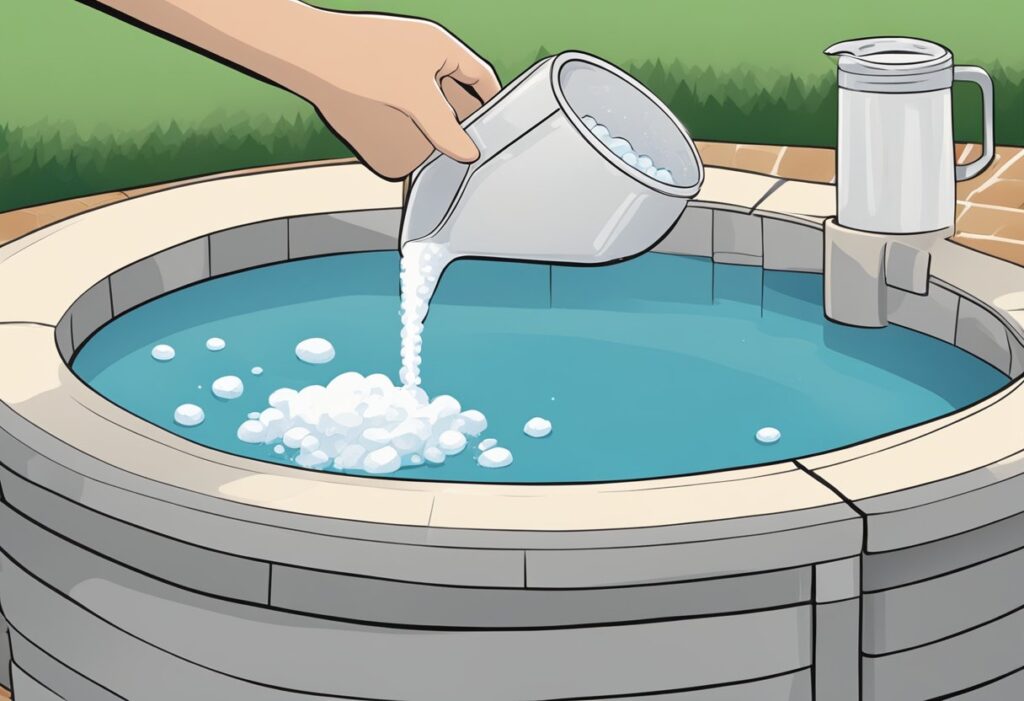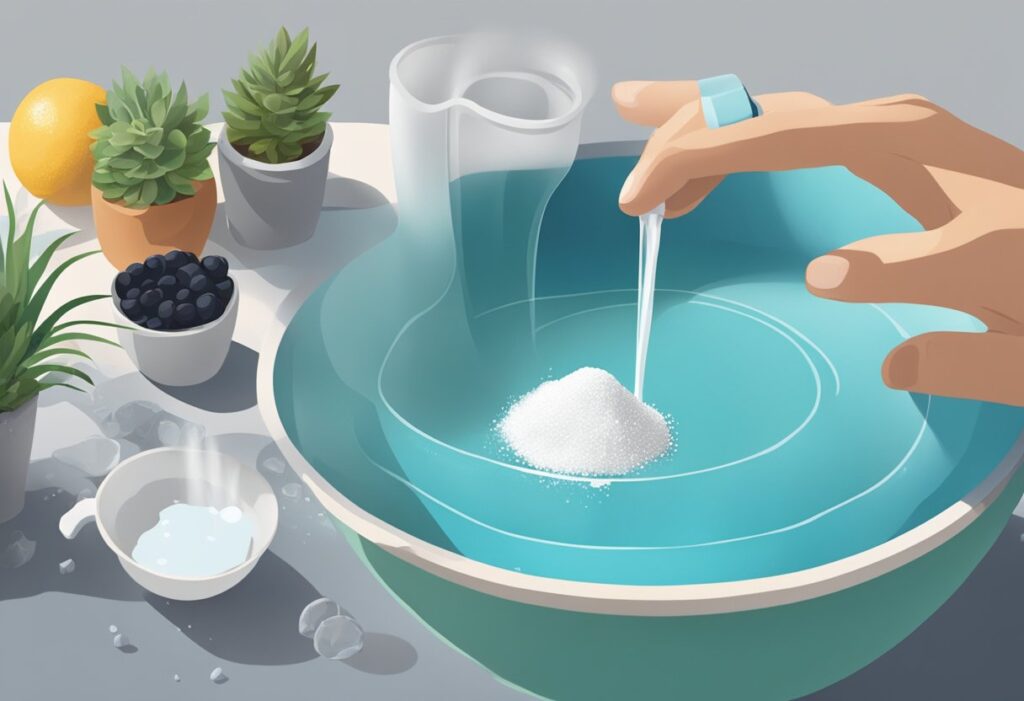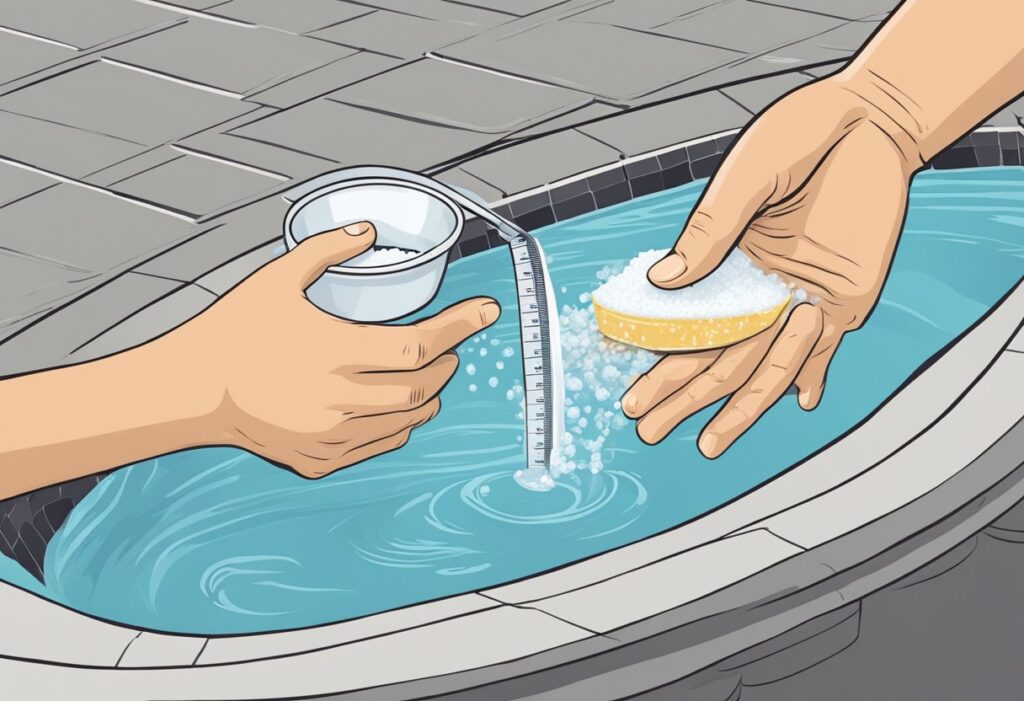Maintaining the salt levels in your pool is crucial for keeping the water clean and ensuring the proper function of your salt chlorine generator. The generator uses electrolysis to convert the salt (sodium chloride) in the water into chlorine, which sanitises your pool by breaking down bacteria and algae. To achieve the right salinity for this process, typically between 2,500 and 3,500 parts per million (ppm), it’s essential to know how much salt to add to your pool.

If your pool is new or you’ve recently refilled it with fresh water, you’ll need to add a significant amount of salt. For an average-sized pool holding about 50,000 litres, achieving the recommended salt concentration of 3,200 ppm may require around 150 kilograms of salt to start. Regular testing of your pool’s salt levels is important, as environmental factors such as rainfall, heavy usage, and topping up water can dilute the salinity.
Adjusting the salt in your pool is a straightforward process. If the salinity is low, you’ll add more salt; and if it’s high, you might dilute your pool with fresh water or, in some cases, partially drain and refill your pool. Always add salt according to the manufacturer’s guidelines and use appropriate test strips or a digital salinity meter to ensure accurate measurement, thus keeping your pool’s ecosystem balanced and your swimming experience pleasant.
Understanding Pool Salinity
When maintaining your swimming pool, knowing the proper salinity level is paramount for efficient chlorine generation and overall pool health.
Salt and Its Role in Pool Maintenance
Salt, when added to your pool, is the primary element in a saltwater chlorination system. It works by passing through a chlorine generator, where the salt is converted into chlorine through a process called electrolysis. This chlorine is what sanitises your pool, keeping it free from bacteria and algae. The salinity of your pool water—measured in parts per million (ppm)—thus becomes a critical factor in ensuring the efficacy of your pool’s disinfection process.
To determine your pool’s current salt levels, you’ll need a reliable test kit or test strips. It’s essential these tools are designed for saltwater pools to provide accurate measurements. Once you’ve established your pool’s salinity, you can adjust the salt content accordingly.
Ideal Salt Levels and Chlorine Generation
The ideal salt level for a residential saltwater pool typically ranges between 2,500 and 3,500 ppm. Establishing and maintaining this concentration is vital for the optimal performance of your chlorine generator. Too little salt, and the generator won’t be able to produce enough chlorine to keep the water clean; too much could lead to equipment corrosion and discomfort for swimmers, such as eye irritation.
Here is a breakdown of what you need to know about ideal salinity levels:
- Optimal Range: 2,500 – 3,500 ppm
- Chlorine Generator Performance: Requires consistent salt level within the ideal range
- Measurement: Utilise a salt-specific test kit or test strips to determine salinity levels
If your pool’s salinity level falls below the ideal range, you’ll need to add more pool salt to reach the desired ppm. On the other hand, if salinity levels are too high, you’ll have to dilute your pool water by partially draining and adding fresh water.
By appropriately managing the salinity of your pool, your chlorine generator can function efficiently, keeping your pool water clean and safe for everyone to enjoy.
Calculating Salt Addition

To achieve the proper salinity in your pool, precise calculations are necessary. Knowing your pool’s volume and using a reliable salt calculator will help you add the right amount of salt.
Determining Pool Volume
Your first step is to ascertain the volume of your pool as it dictates how much salt is required. For rectangular pools, the formula is length x width x depth x 1,000 to find the volume in litres (L). Here’s a simple breakdown:
- Length (m): Measure the longest side of the pool.
- Width (m): Measure the shortest side.
- Depth (m): For non-uniform depth, calculate an average.
Example:
If your pool is 10m in length, 5m in width, and has an average depth of 2m:
10m (Length) x 5m (Width) x 2m (Depth) x 1,000 = 100,000L
Your pool capacity is 100,000 litres.
Using Salt Calculators for Accurate Measurement
Once you know your pool volume, a salt calculator can pinpoint the exact amount of salt to add. These calculators will request your pool’s current salt concentration (measured in parts per million or ppm) and the desired ppm, typically between 2,700 to 3,400 for ideal salinity.
To use a salt calculator, input:
- Pool Volume (L): The calculation you’ve just done.
- Current Salt Levels (ppm): Test your water to determine this.
- Desired Salt Levels (ppm): Typically 3,200 ppm.
Example Calculation:
For a pool with a volume of 50,000L, a current concentration of 2,500 ppm wanting to increase to a recommended level of 3,200 ppm:
- Input these values into the salt calculator.
- The calculator will specify the amount of salt to add in kilograms (kg).
Remember, these calculations are crucial for maintaining your pool in prime condition without wasting resources or causing imbalances.
Proper Salt Addition Techniques

Adding the correct amount of pool salt and using the proper technique ensures efficient maintenance and prolongs the lifespan of your pool equipment. Pay close attention to choosing the right type of salt and follow the steps carefully to ensure the salt dissolves effectively without harming your pool’s systems.
Choosing the Right Salt
You must use pool-grade salt that is at least 99.8% pure sodium chloride. The three main types of salt used in pools are mined salt, solar salt, and mechanically evaporated salt. While mined salt is generally the purest form, mechanically evaporated salt often dissolves better. Solar salt, derived from evaporated seawater, contains more insoluble elements, which could lead to cloudiness in your pool water. For optimal performance of your salt chlorine generator, always opt for high-purity salt as specified by the generator’s manufacturer.
Steps for Adding Salt to Your Pool
Test your pool’s current salt level using salt test strips or a digital salinity meter. Knowing your current salt level is crucial for determining how much salt you need to add to reach the ideal concentration of 2,500 to 3,500 parts per million (ppm).
- Calculate the amount of salt you need. You can find many calculators online, or you can do the math yourself. For example, to increase the salinity of a 50,000-litre pool from 200 ppm to 3,200 ppm, you would need to add 150 kg of salt.
Buy the right number of bags of salt. Salt usually comes in 20 kg bags, so divide the total amount you need by 20 to find the number of bags required.
Turn off the pool’s salt chlorine generator and keep the filter running to circulate the water.
Add the salt to the pool. Spread it across the pool surface, pouring slowly by the water return lines, or directly into the shallow end.
Use a pool brush to help disperse and dissolve the salt more quickly. Brush the pool floor to ensure no salt rests on it, as this can damage the pool liner or finish.
- Allow the salt to dissolve completely, which can take up to 24 hours. Keep your pool’s pump running to circulate the water and aid in the dissolution process.
Re-test your pool water after 24 hours to ensure the proper salinity level has been achieved. Adjust as necessary by adding more salt or diluting your pool with water if levels are too high.
Once the desired salt level is attained, refill your salt chlorine generator if it was disconnected, and resume normal pool maintenance.
Following these specific guidelines will help maintain a balanced, clean, and comfortable swimming environment in your pool.
Maintenance and Troubleshooting
Proper maintenance and troubleshooting are paramount for the health and longevity of your saltwater pool. Ensuring the correct salt levels and addressing common issues will keep your pool clean and safe for swimming.
Regular Testing and Adjusting Salt Levels
To maintain optimal salt levels in your saltwater pool, regular testing is essential. Test salt levels weekly using a reliable salt testing kit, which you can purchase from your local pool store. Aim to maintain salt levels between 2,500 and 3,500 ppm (parts per million). If you discover high salt levels, partially drain the pool and add fresh water to bring the concentration down. Conversely, if levels are low, add the appropriate amount of pool-grade salt. Remember to distribute the salt evenly across the pool and give it time to dissolve.
Adjusting Alkalinity and pH: Alongside salt, keep a check on alkalinity and pH levels. They should range between 80-120 ppm and 7.2-7.6, respectively. Use a liquid reagent kit or digital reader to measure these levels. If adjustments are necessary, follow the instructions for your specific pool or visit a pool specialist for guidance.
Addressing Common Salt Pool Issues
Your pool’s chlorinator and filter play key roles in keeping the water clear of bacteria and algae. If you face issues with water clarity or cleanliness, inspect these elements. A clogged chlorinator or filter needs backwashing or possibly replacing if damaged.
Temperature and Seasonal Changes: Be mindful that water temperature and different seasons can affect salt and chlorine levels. Warmer temperatures can lead to increased bacteria growth, requiring more active maintenance.
Dilution through Rainfall: Heavy rainfall can dilute your pool’s salt content. After significant downpours, retest your water and adjust the salt levels accordingly.
Equipment Troubles: Should your pool experience problems with salt distribution or chlorine generation, ensure there’s no build-up of salt or other chemicals around the chlorinator cell. Regular cleaning and, if necessary, descaling of the cell are critical.
By keeping to these maintenance and troubleshooting steps, your saltwater swimming pool should remain a refreshing and enjoyable retreat.











